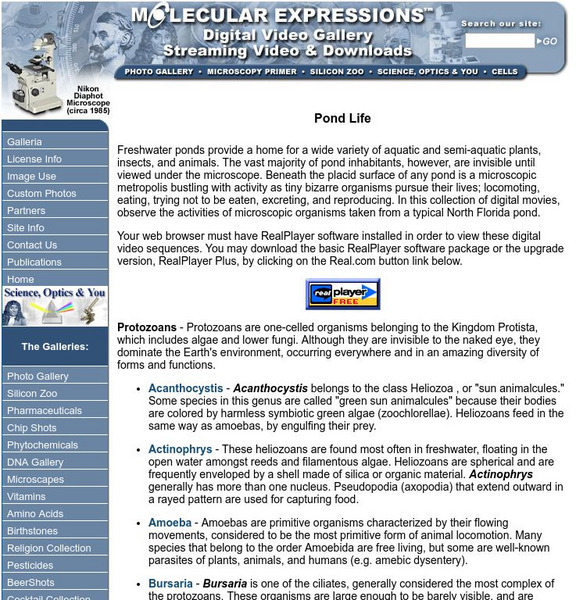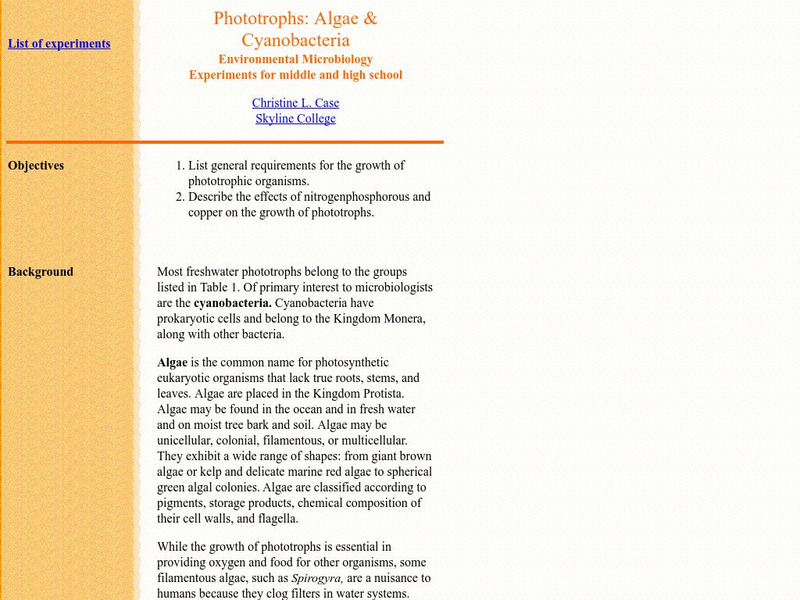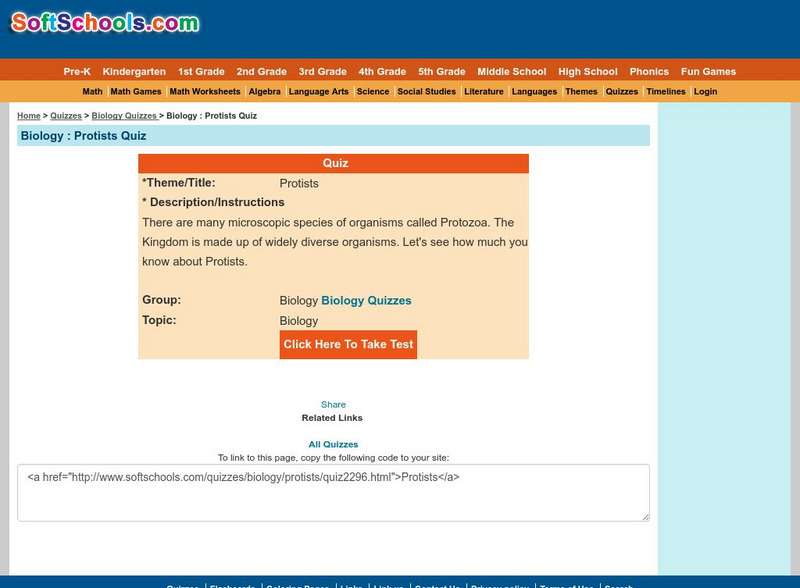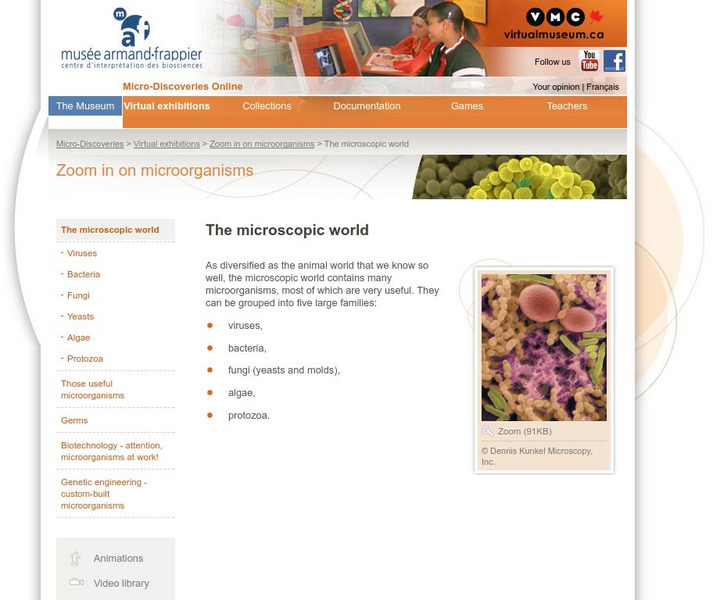Curated OER
Sensational Seaweed
Students compare kelp and land plants. In this sea plant lesson, students look at the role of algae in aquatic environments. They research the properties of kelp and explore seaweed.
Curated OER
A Survey of Plankton Communities
In this biology worksheet, students identify and define the vocabulary terms listed and make a prediction about the outcomes of the experiment. Then they complete the chart of the observations of the plankton diversity in drops of pond...
Curated OER
TE Lesson: How Clean is that Water?
Students examine the factors the affect water quality, and allow for animals and plants to live. They look at how engineers apply water quality information when making stream modifications in order to ensure drinking water quality. They...
Curated OER
Exploring Limu Diversity
Students explore limu diversity. In this ocean ecosystem instructional activity, students classify limu according to its physical properties. Students work in small groups to generate scientific observations and sort limu by...
Curated OER
Diversity of Life
Students identify the difference between eukaryote and prokaryotes and examine the structure of bacteria. In this bacteria lesson students examine the different ways that bacteria are classified through an activity.
Curated OER
Protists
In this protists worksheet, students will use idea maps about plantlike protist and funguslike protist characteristics to complete 4 short answer questions.
Curated OER
Protists
In this protists learning exercise, students will review the different types of protists and the different stages of the protist life cycle. This learning exercise has 10 matching questions.
Curated OER
Ocean Market
Students identify some consumer goods that come from the ocean.
They classify these items into groups, identify their source, and calculate the cost of buying such goods.
Curated OER
Classification
In this biology worksheet, students identify and locate various vocabulary terms related to the classification of living things. There are 32 biology terms located in the word search.
Curated OER
Diversity of Microorganisms
In this biology worksheet, students identify and locate various vocabulary terms related to the diversity of microorganisms from A to Z. There are 39 biology terms located in the word search.
Curated OER
Microworlds in Waterways Around You Home
Students explore the concept that different waterways support different organisms. After completing experiments, students predict what life-forms exist in each waterway in their area. They research how humans impact the habitat of other...
Curated OER
Testing Growth of Algae
Students participate in an experiment in which they test the growing rate of algae. They test the algae in different elements recording their observations. They share their results with the class and discuss.
Curated OER
There Are Algae in Your House!
Students complete a worksheet at home stating what types of food they have at home with algae in it. They, in groups, compare with each other what they have on their worksheet.
Curated OER
Water Quality and Nitrates & Phosphates
Young scholars examine the effects of nitrates and phosphates on the dissolved oxygen levels in different water sources. For this series of 3 lessons, they consider the reasons for nitrate and phosphate level increases and their effects...
Florida State University
Florida State University: Pond Life
Explore the microscopic organisms that live in the freshwater ponds with this video collection. These video clips feature unicellular organisms, from under the microscope, showing off their daily activities. Collection includes videos of...
Science Daily
Science Daily: Algal Heat Damage and Coral Bleaching
Article identifies elevated water temperature as a cause of coral bleaching due to loss of photosynthetic ability in symbiotic algae.
Other
Skyline College: Phototrophs: Algae and Cyanobacteria
A lab activity where pond water samples are collected to observe the requirements for the growth of phototrophic organisms. To observe these requirements samples are separated into different variable groups. One group is incubated in the...
Soft Schools
Soft Schools: Protists Quiz
Take an interactive quiz over protists. After completing the quiz, check your score, and then revisit any incorrect question for further review.
Other
Armand Frappier Museum: Micro Discoveries Online: The Microscopic World
This comprehensive exhibit focuses on the wonders of microorganisms, what they are, how they can affect our daily lives, and how they can be manipulated. Videos, games, and animations are included. Teacher resource link explains each...
McGraw Hill
Glencoe Biology: Chapter 19: Protists: Chapter Test Practice
Try these fifteen multiple choice review questions about the Kingdom Protista.
BiologyWise
Biology Wise: Reproduction in Algae
Algae are not uniform in their methods of reproduction. Some reproduce sexually and others asexually. Read a brief overview of algae reproduction in this resource.
BiologyWise
Biology Wise: Diatoms Reproduction
Diatoms are a type of algae that reproduces both sexually and asexually. Its characteristics and methods of reproduction are described here.





















